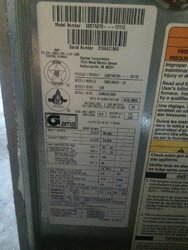I upgraded to a newer high-efficiency furnace (not over 90%) which exhausts into my existing chimney. Last winter I had moisture weeping thru the chimney block. In researching the issue, I need a liner to stop this issue. So my question is: How big a diameter liner do I need? I currently have a cap on my chimney so no rain or birds can enter. My furnace exhausts about 4 1/2 - 5' from the base of the chimney stack into an existing hole where an old cook stove used to connect. It is in the center of my house, all heated living space. My chimney inside diameter is: 11 1/8" x 6 5/8". Do I really need something that large - that sizing is quite costly to say the least. Could I use a 4" or 6". I still need enough room to connect a Tee to the furnace flue.
I see that most are round so wondering if they come in an oval shape too?
I see that most are round so wondering if they come in an oval shape too?



